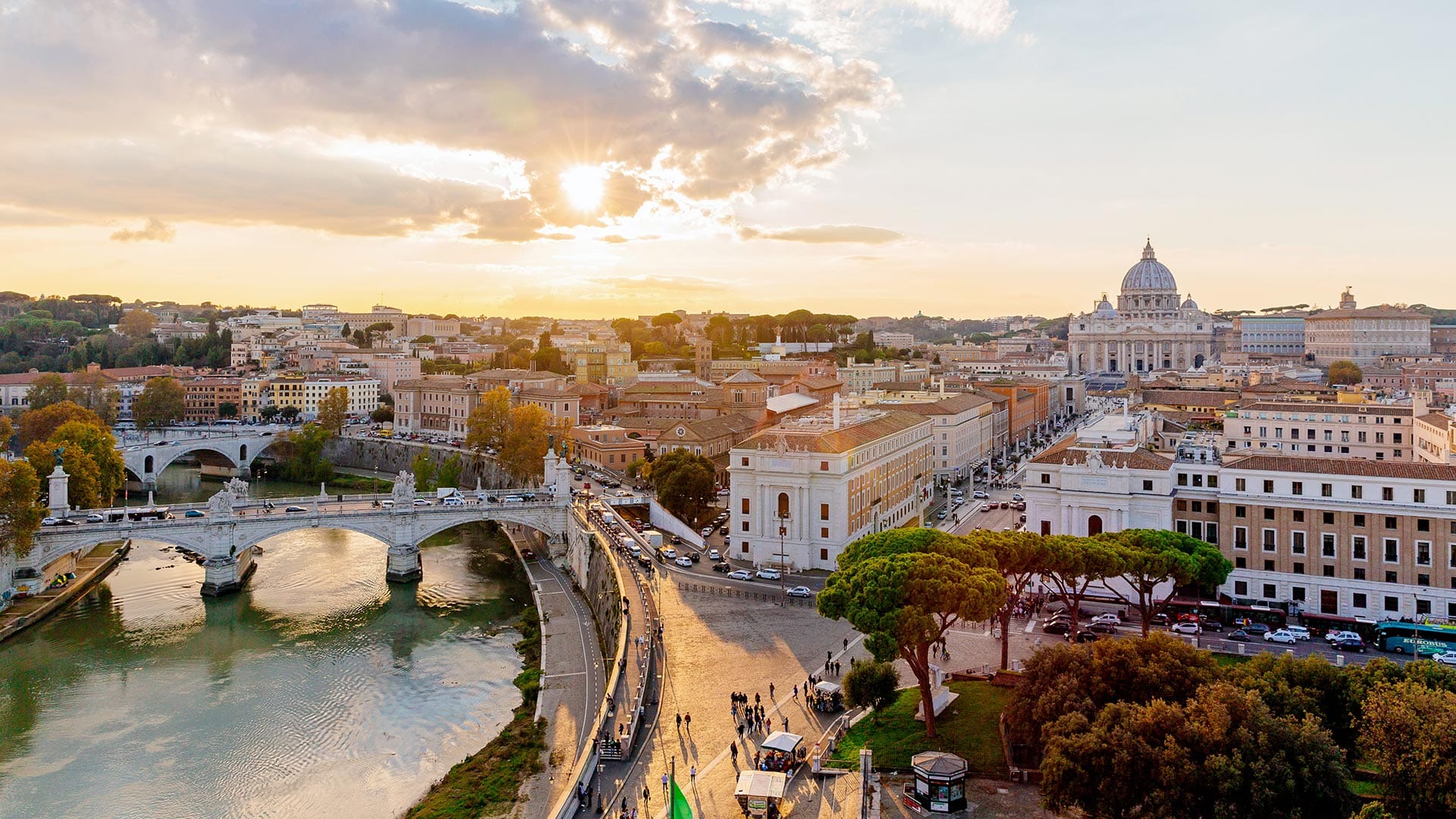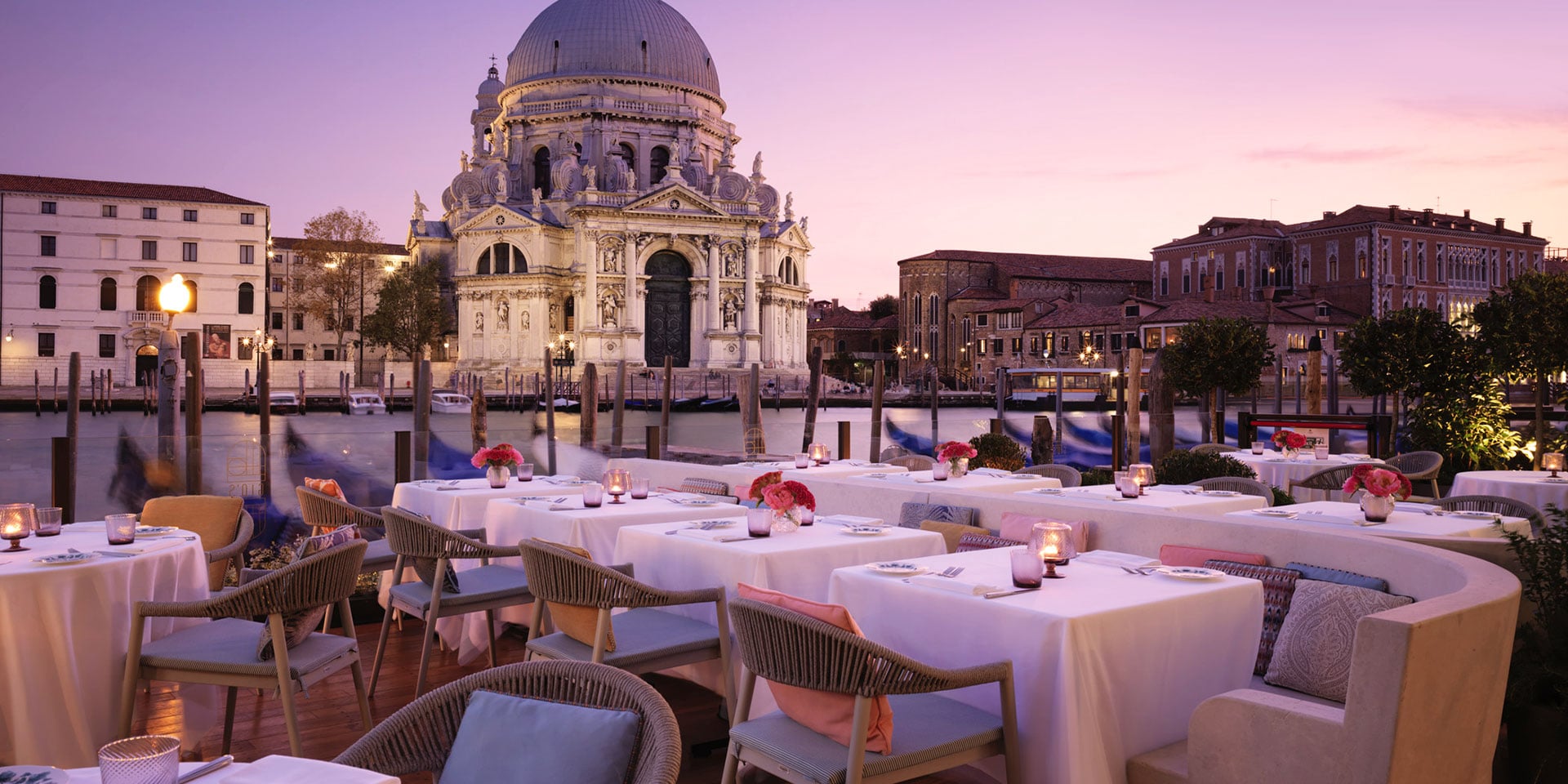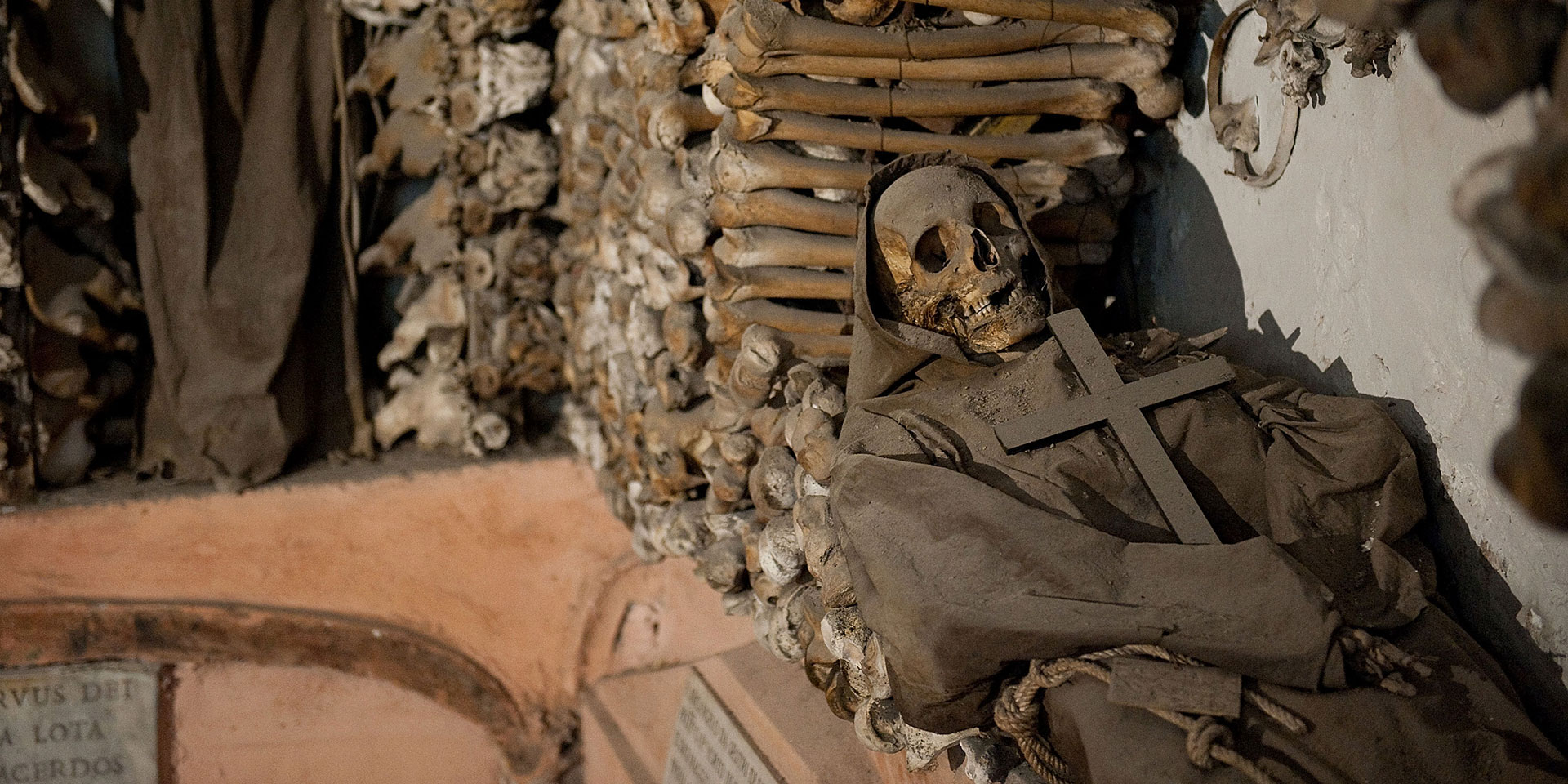
gaze upon the exhumed remains of some 3,700 friars at the Capuchin Museum. (Photo: Getty Images)
RomeA Quick Tour Through Rome’s Macabre, Haunted Past
By Carl PettitWhen exploring a city as old as Rome, you’ll find more than a few skeletons (or tens of thousands of them) — with some fascinating and oftentimes gruesome tales to tell — buried just below the cultural and literal surface of the magnificent Italian capital.
And if you happen to number among those darker souls who find the macabre immensely appealing, or are simply enamored by ancient piles of human bones, Rome’s gloomier past has the potential to delight you for hours, if not days on end.
The Capuchin Museum and Crypt
Venture beneath the Santa Maria della Concezione dei Cappuccini church, which rests near the trendy Via Veneto (smack dab in the center of Rome), and you’ll be able to gaze upon the exhumed remains of some 3,700 Capuchin friars.
The bones — skulls, shins, pelvises and more — are artfully arranged in five of the six underground chapels and crypts and offer guests a chance to reflect on the fleeting nature of mortality — while sending ghostly shivers down their spines at the same time.
Ponte Sisto
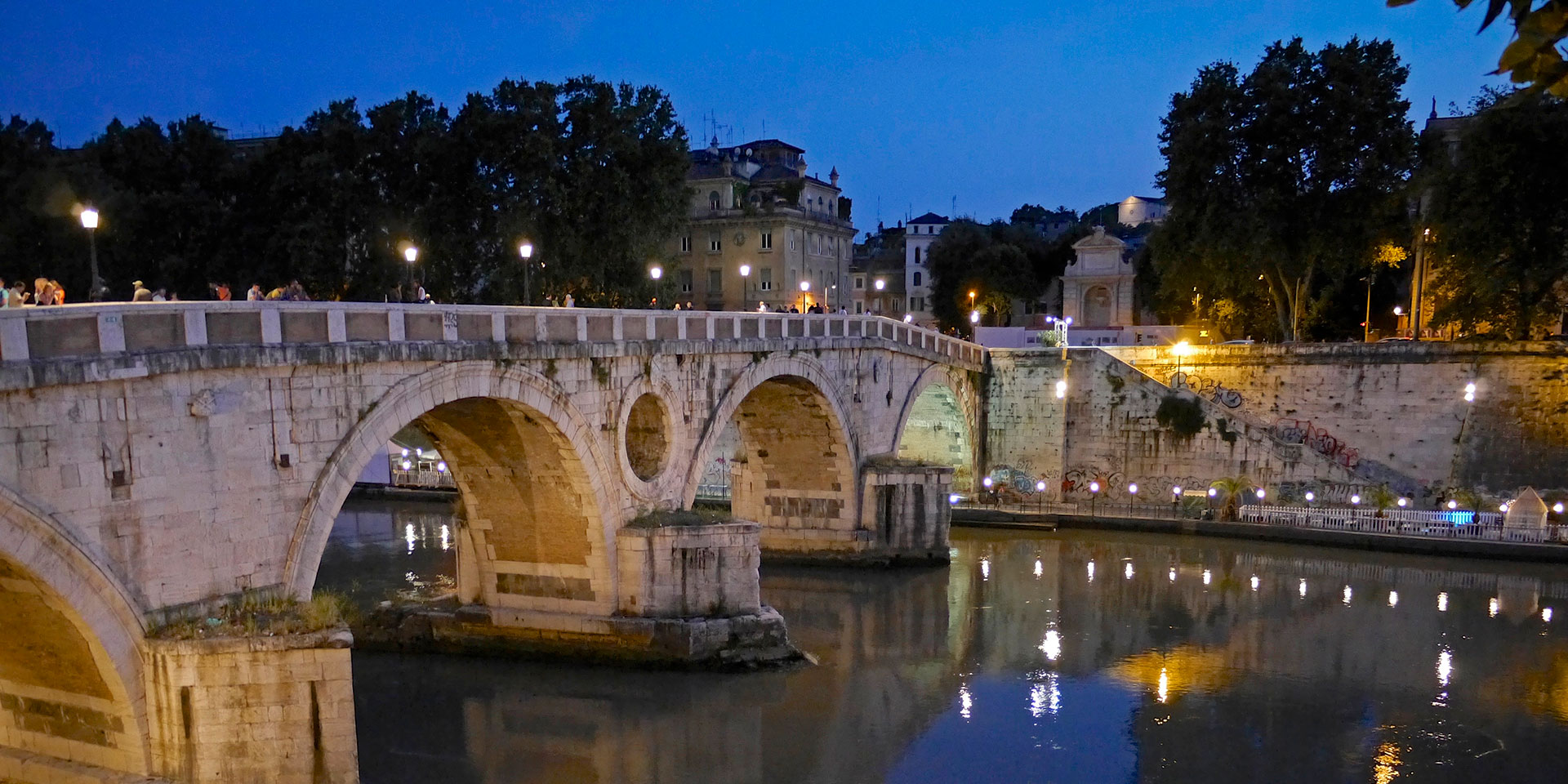
While the Ponte Sisto is a lovely Roman bridge with nothing particularly creepy about its span, it has the potential to send goosebumps rippling across your flesh nonetheless. Olimpia Maidalchini, sister-in-law to Pope Innocent X, became the unofficial adviser to the Pope after her husband died.
She then amassed a great fortune, thanks to her relationship with Innocent X, but fell out of favor with the public. Knowing the common folk despised her, Olimpia fled the Palazzo Pamphilj mansion in a carriage (filled with gold and jewels) across Ponte Sisto when the Pope was near death.
And to this day, or so the legend goes, her “ghost” carriage can still be seen speeding across the bridge, still desperately trying to get out of town.
Museum of the Holy Souls in Purgatory
If collections of bones in catacombs and crypts aren’t grim enough for you, let’s swing by purgatory for a spell, shall we?
The Museum of Souls in Purgatory, located in the church Chiesa del Sacro Cuore del Suffragio (next to the Tiber River), has gathered a humble collection of artifacts purportedly signed by souls trapped in purgatory.
The objects, which include articles of clothing and books, were “signed” with the burnt handprints of the dearly departed. These items were meant to motivate living relatives to pray for loved ones assigned to purgatory … and maybe help them find their way out.
Rome’s Criminology Museum
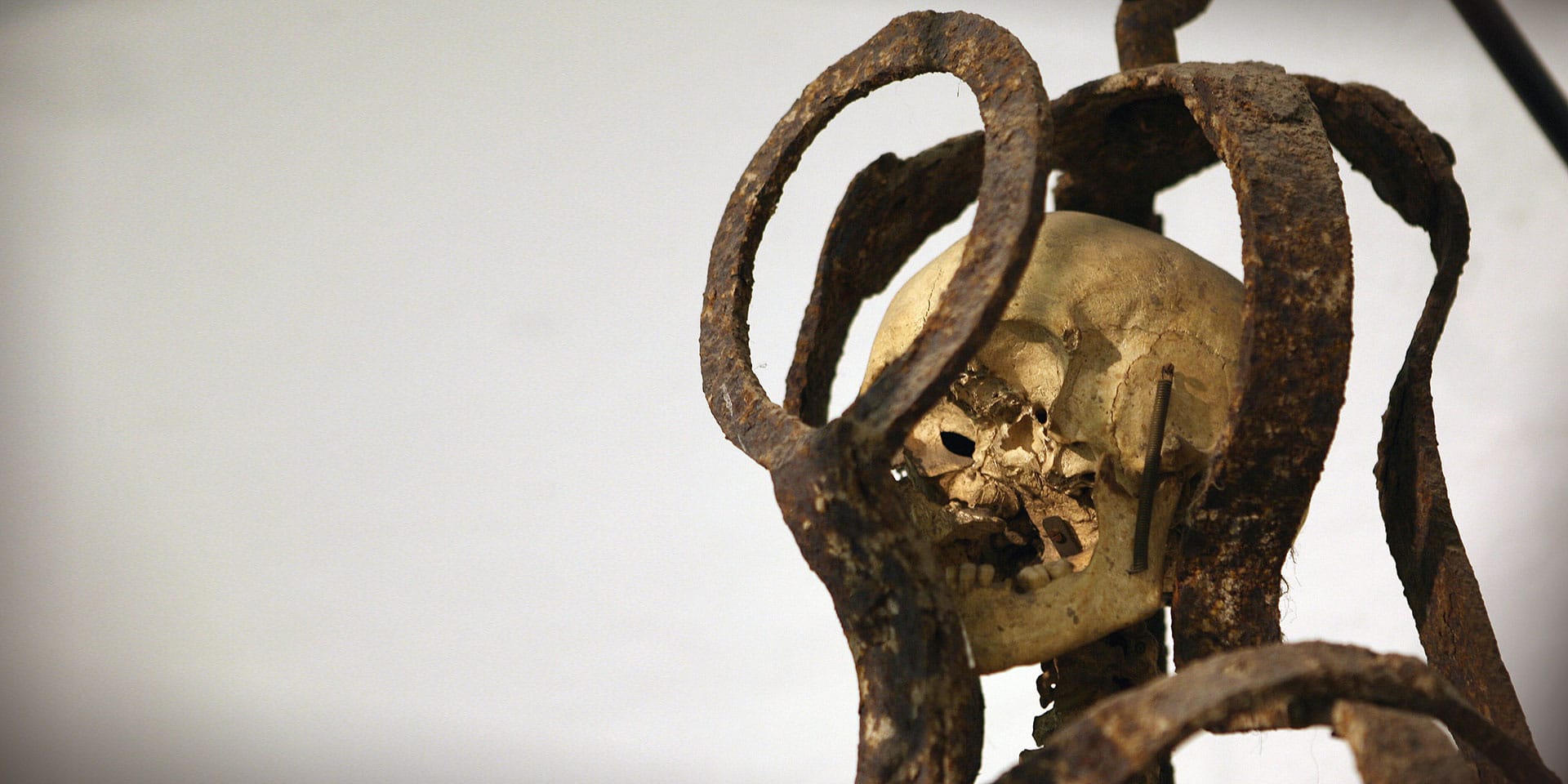
If you’d like to see how Italians once imprisoned, interrogated and tortured prisoners, Rome’s Criminology Museum is the stop for you — assuming you’re not too squeamish.
Located just east of the Tiber, not far from Ponte Giuseppe Mazzini, the museum (a former prison itself) is home to an impressive collection of apparatuses designed to restrain convicts and increase their suffering (like the infamous Milazzo Cage, shaped like a human body).
Additional museum exhibits steer away from the gruesome and instead emphasize improvements in criminology and investigative techniques over the years. Rome’s Criminology Museum is truly a place to dive deep into the history of Italian crime and punishment.
Vatican Necropolis
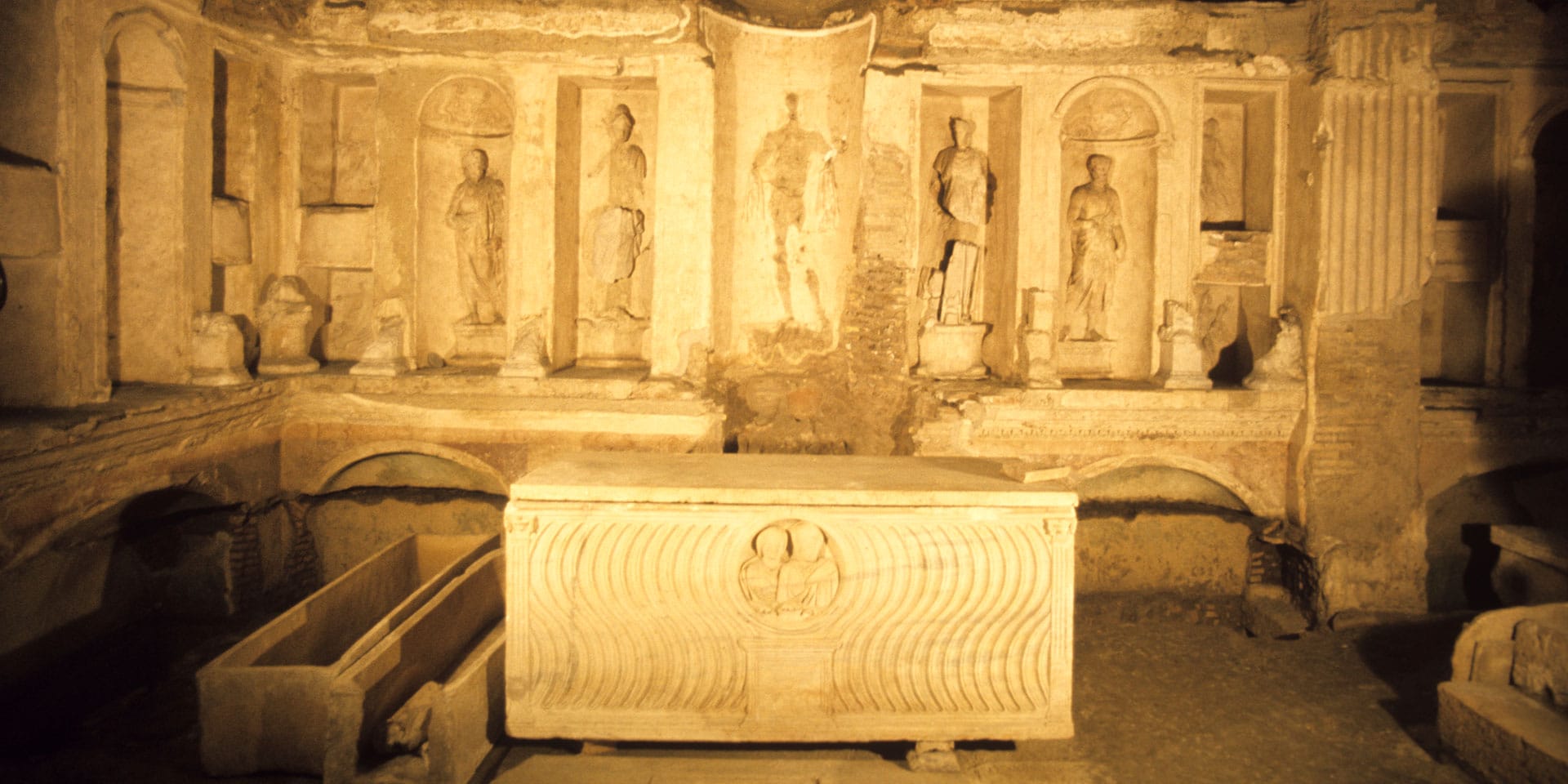
For those who have a bit of the “Indiana Jones” spirit coursing through their blood, the Vatican Necropolis (Scavi) should be high on their list of places to visit in Rome. Filled with mausoleums and human cadavers, the Scavi is located beneath St. Peter’s Basilica. The remnants of the simple graveyard held within are thought by many to be St. Peter’s final resting place.
Permission to explore the Scavi (in small groups) can only be obtained through the Vatican Excavations Office, which means you’ll need to do some planning ahead of time if you’d like to head down into the Necropolis for a visit.
The Catacombs of St. Callixtus
Dig around the papal crypts (not literally, as that’s frowned upon) and discover what the Catacombs of St. Callixtus — named for the martyred pope St. Callixtus — have to offer. Situated along the Appian Way (an ancient Roman road), construction of the catacombs began in the third century.
The galleries, spanning some 37 acres, once held the remains of 16 Popes and dozens upon dozens of Catholic martyrs. Open daily for tours (except Wednesdays), the catacombs still house the remains of some of the most important people to ever shape the Catholic Church.





